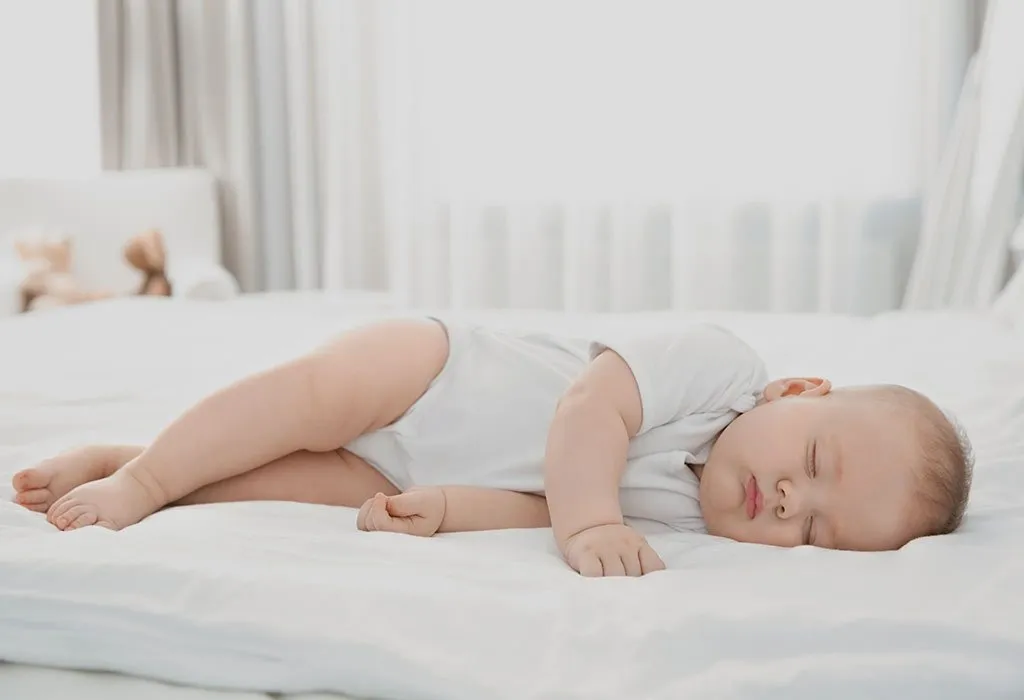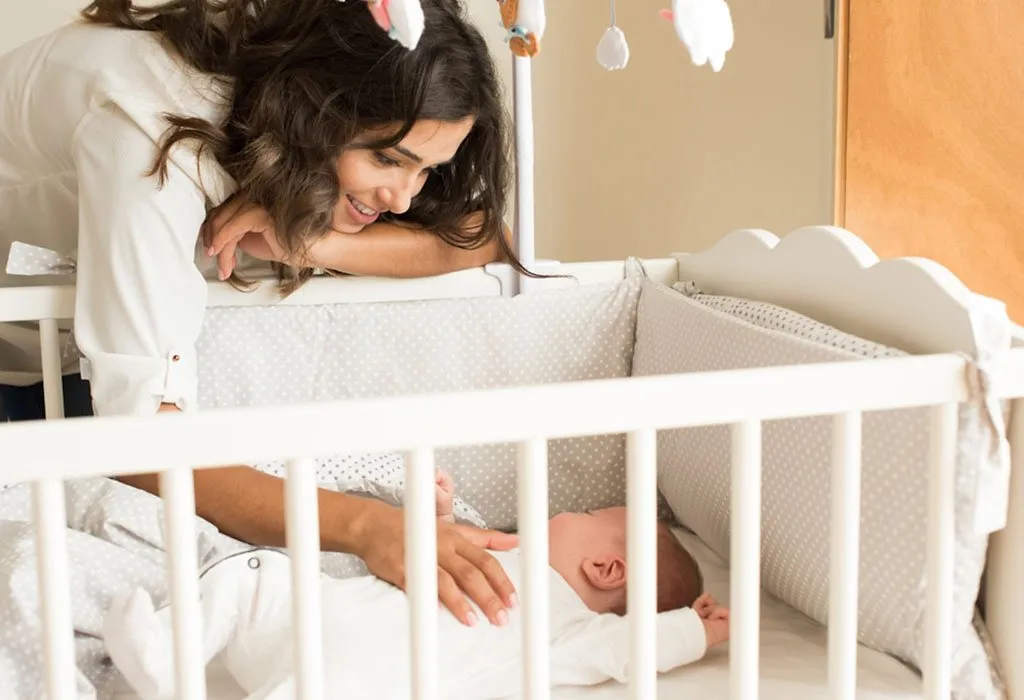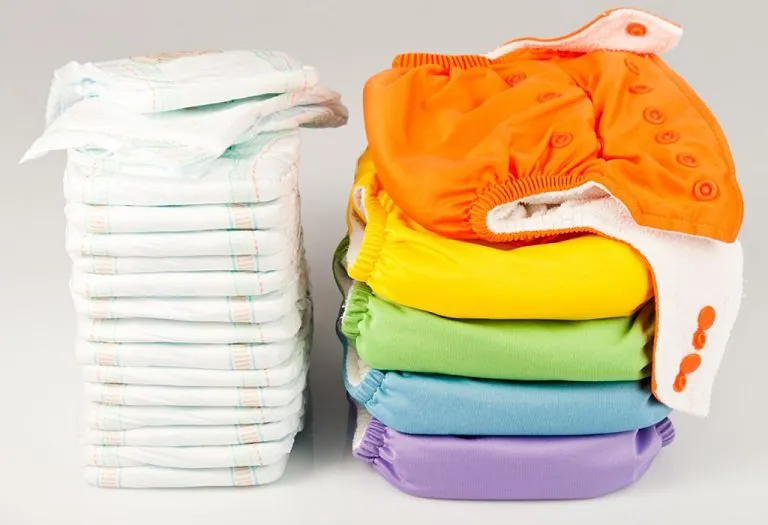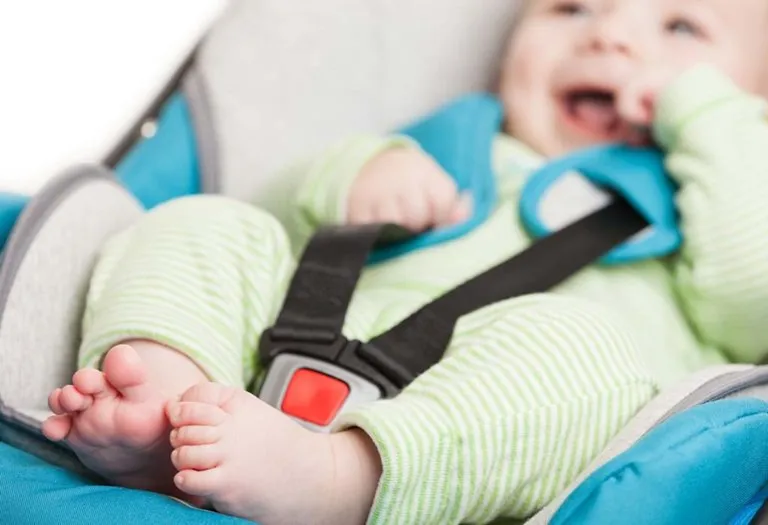Can Fan in a Baby’s Room Lower SIDS Risk?

Most homes have air conditioners these days, and parents make their little ones sleep in AC rooms. But is it good to make a baby sleep in an AC room, or should you make them sleep in a room with a ceiling fan? There is no definite reason to say that AC increases the risk of SIDS, and fan in the baby room does not. But why do people say that you should make your child sleep in a room with a fan and not an AC? Let’s find out what is the relationship between fans and SIDS and the benefits of making a baby sleep in a room with a fan. But before, first understand what SIDS is.
What Is SIDS?
Infants are often susceptible to unexplained fatalities in their cribs, which is commonly called SIDS or Sudden Infant Death Syndrome. These casualties usually take place in the crib as the baby sleeps and, hence, are commonly called crib deaths, too. Although the cause of SIDS is not clear, there are certain risk factors both physical and environmental that increase a baby’s risk of succumbing to it.
Babies born with brain defects may not have controlled breathing and sleeping patterns and, hence, they are more prone to SIDS. Premature babies born with low birth weight may have underdeveloped brains that are not mature enough to control sleep and breathing, which increases the risk of SIDS. Babies suffering from respiratory infections may also succumb to SIDS. Apart from physical concerns, certain environmental concerns like sleeping on the stomach, on a soft mattress that sinks in, sharing a bed with parents, etc., which can cause the baby’s airway to be accidentally blocked can also lead to SIDS. Excessive heat in the baby’s room also tampers with the baby’s breathing, potentially leading to sudden infant death syndrome.
Benefits of a Fan in Your Baby’s Nursery
Installing a fan in your baby’s room does have a bunch of advantages. A lot of those help in keeping your baby safe as well as ensuring that he gets the deep sleep that is important for him.
- Replacing an air-conditioner in your infant’s room with a fan is highly recommended. The technique by which an air-conditioner treats the air within the room is not conducive to the little one. It usually introduces newer molecules in the air and removes the existing moisture, making the instances of asthma or other respiratory issues as well as skin-related conditions more evident than before. A fan manages to keep the air moving around without getting rid of the natural humidity.
- In summers, you may feel like setting up an air-conditioner or a cooler in your baby’s room. While the intent is a noble one, these methods could push the temperature to the extremes, making it difficult for your baby’s body to adapt and adjust once he is out of that room. A fan can bring down the temperature to a level that’s comfortable for the baby, without the prior risks.
- A completely closed and a sealed room can make it unnerving for the child. Combined with the sound of the air-conditioner, the kicking-on of the compressor can result in disturbed sleep, too. A fan has a constant light white noise, which is quite similar to what a child hears within the womb. This brings in a sense of safety within the little one and allows him to fall deep in his slumber.
- Though if you are using the AC, keep the fan on along with it and also keep the temperature maintained between 25 to 27 degrees Celsius.
How a Fan in a Baby’s Room Lowers the Risk of SIDS?
Wonder how and why does a fan reduce SIDS? While there is no evidence suggesting that a fan in a baby’s room can lower the risk of SIDS, certain factors that lead to SIDS are lowered.
- One of the major reasons behind Sudden Infant Death Syndrome (SIDS), is the lack of ventilation in the child’s nursery. To use an AC in a room requires the room to be sealed fully, and that can get a little claustrophobic for the child. However, a simple tiny open window, combined with the airflow supported by the fan’s movement, can allow the air to move around easily and keep good ventilation within the room, therefore, fans reduce SIDS.
- Many statistics have observed that the rate of infant mortality due to SIDS dipped by nearly 50% when parents chose to keep windows open rather than closed. Apart from ventilation, there is also a need to keep the levels of carbon dioxide under control within the room. A ventilated room with a fan can ensure your child gets oxygen throughout his sleep cycle.

Which Type of Fan Is Best for a Baby?
The following types of fans are ideal for a baby:
- If you opt for a portable fan like a tower or table fan, ensure its base is stable, and it’s positioned out of reach from curious little hands, both for the fan blades and the unit itself. Similarly, ensure power cords are safely out of your baby’s grasp.
- Ceiling fans designed for nurseries can prove more efficient in distributing air across bigger areas, especially in hotter months when preventing overheating is essential.
Precautions to Take
When resorting to using a fan in a child’s room, parents often wonder if a fan is safe for a baby’s room or should they go for a type of cooler instead. Using a fan instead of an AC in an infant’s room is a better option. However, you should take these precautions to keep a safe and secure environment for your child.
- For your kids’ nursery, you may want to hang some decorative items or visually appealing objects on the base of the ceiling fan to entertain the child. However, that’s a risky endeavour since those objects are at risk of falling directly on your baby.
- Make sure your ceiling fan is cleaned every month so as to rid of any dust and dirt that gets accumulated on the blades as well as the body of the fan.
- If the nursery of your child is going to evolve to hold bunk beds for the children, make sure the fan is around 5 feet away from the top bunk. This will stop your kids from trying to reach out for the fan and playing around with it.
- While you might opt for a table fan instead, a ceiling fan is a better choice since there’s no way your child would be able to reach it. But ensure that it is installed by professionals.
- Keep the fan speed at a low to medium setting, so that the noise is minimal and the air doesn’t cool down extensively.
-
Steer clear of fans obtained from thrift stores or handed down by friends. Previously owned fans might harbour hidden internal electrical issues that are not easily visible.
-
Employ a fan guard – a mesh cover designed to fit over the blades. This serves as a protective shield for tiny fingers while maintaining uninterrupted airflow.
FAQs
1. Can I Leave the Fan on Overnight in the Infant’s Room?
Absolutely, it’s safe to keep the fan running overnight in your baby’s room. In fact, it can contribute to maintaining a comfortable and cool environment.
2. Does Baby Like Sleeping Under the Fan?
Indeed, the fan generates pink noise, a soothing sound that aids babies in falling asleep more quickly and enjoying longer periods of rest. Pink noise, similar to the sound of rain or the gentle whirring of a ceiling fan’s blades slicing through the air, has a calming effect on children, promoting deeper sleep.
Fans are a better option than ACs. So, make your baby sleep in a room with a ceiling fan, as it also lowers the risk of SIDS. Be on the safer side and stick to a natural technique of conditioning the air than getting used to an artificial one.
References/Resources:
1. Sudden Infant Death Syndrome (SIDS); kidshealth.org; https://kidshealth.org/en/parents/sids.html
2. Sudden infant death syndrome (SIDS); mayoclinic.org; https://www.mayoclinic.org/diseases-conditions/sudden-infant-death-syndrome/symptoms-causes/syc-20352800
3. Sudden Infant Death Syndrome (SIDS); childrenshospital.org; https://www.childrenshospital.org/conditions/sudden-infant-death-syndrome-sids
4. Sudden Infant Death Syndrome (SIDS); stanfordchildrens.org; https://www.stanfordchildrens.org/en/topic/default?id=sudden-infant-death-syndrome-sids-90-P02412
5. Sleeptime: Increase Air Circulation to Lower SIDS Risk; nationwidechildrens.org; https://www.nationwidechildrens.org/family-resources-education/family-resources-library/sleeptime-increase-air-circulation-to-lower-sids-risk
Also Read:
Room Temperature for Newborn Baby
Room Sharing With Baby – Important Tips for Parents
Why Your Baby Should Sleep In Your Room But in a Different Bed!

















